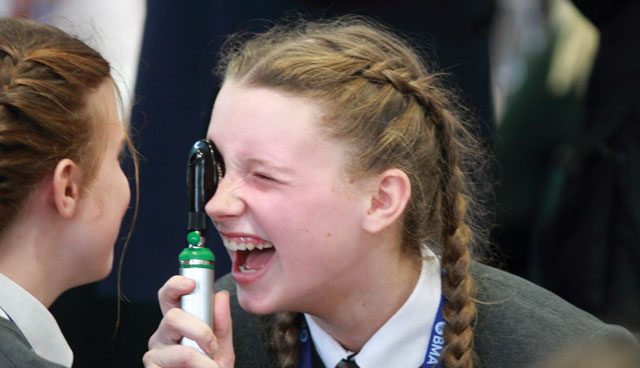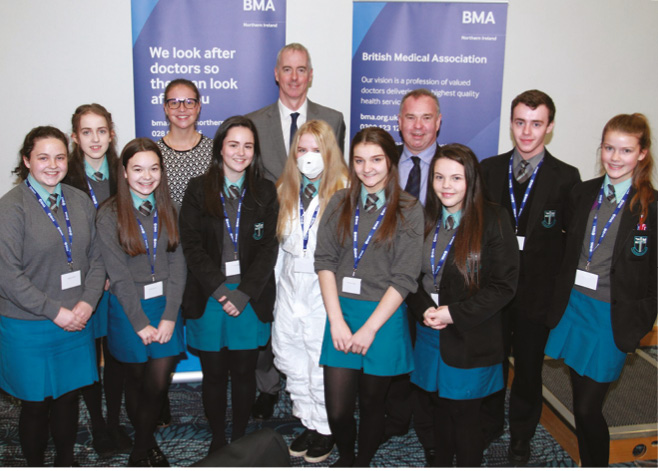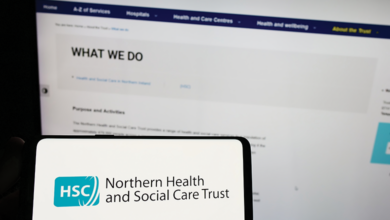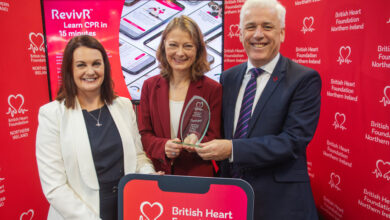BMA: towards a diverse workforce


Workforce planning is central to solving the challenges facing the health service in Northern Ireland. There are not enough doctors working in Northern Ireland at the minute and without positive action the situation will not improve.
Over the past few years the BMA has done extensive work looking at the demographic make-up of the current workforce and identify what could be done to address the workforce issue at the earliest possible opportunity.
One key factor is the number of students going to medical school, and whether that could be increased and diversified. The BMA’s report: The Right Mix (2015) found that students from more disadvantaged backgrounds were not even considering medicine as a career and there was a clear gap in terms of numbers applying and being accepted to medical school.
Further research by BCM Medical Education in 2016 found that among English students, 38 per cent came from the most affluent 20 per cent of postcodes, compared with 54 per cent of those in Scotland, 55 per cent from Wales and 51 per cent in Northern Ireland.
In England, 8.7 per cent of medical students were from the poorest 20 per cent by postcode, against 4.3 per cent in Scotland, 6.5 per cent in Wales and 3.2 per cent in Northern Ireland, making it the least socially diverse medical population in the UK. In addition, 92 per cent of those who study medicine in Northern Ireland have attended a grammar school, meaning making medicine a career choice for students who have attended non-grammar schools must be considered as a key part of widening participation in Northern Ireland.
The challenges of studying medicine
There are many reasons why students may not consider medicine as a career; a key one is the length of study – five years compared to three for most other subjects. This brings with it an associated debt burden; particularly when adding in travel costs, equipment costs and the intensive nature of the course which makes it harder for students to have a part-time job alongside their studies.
Another factor affecting whether young people will consider a career in medicine is exposure to medics, with children from more disadvantaged backgrounds only meeting a doctor in a professional situation rather than socially through their peers and parents, it may not be a career they are familiar with. As the Social Mobility Foundation chief executive David Johnston says: “The middle-class child expects to become the thing they aspire to, while the disadvantaged child does not.”

Why does this matter?
A report by the BMA in 2011: Social Determinants of Health – what doctors can do, points out that when NHS staff are from diverse social groups they can have a bigger positive impact on patients and communities they serve.
As our population changes it is important that the medical workforce is reflective of those it serves, in terms social economic background as well as gender and ethnicity.
With this in mind BMA Northern Ireland has led the way across the organisation in developing a ‘widening participation’ event where secondary school pupils from across Northern Ireland are given the chance to meet and engage with doctors and medical students and learn more about the realities and practicalities of pursuing a career in medicine. This event was specifically targeted at schools that do not have a history of sending students to study medicine.
The first widening participation event took place in Belfast in 2016 as part of the BMA’s Annual Representative Meeting. This October it was repeated as a stand-alone event with pupils from 14 secondary and comprehensive schools from across Northern Ireland invited to take part.
Using a mix of interactive mentoring sessions with doctors from various medical specialities, as well as current medical students, who all shared their reasons for entering the medical profession, pupils met medics to hear about their experiences, what they felt were key considerations for students thinking about entering medicine and the range of career opportunities medicine offered. Pupils were also able to take part in practical medical demonstrations such as punch biopsies, measuring blood pressure, suturing and using a dermascope and microscope.
Speaking at the event, Dr John D Woods, Chair of BMA Northern Ireland Council, said it was important to “dispel the myth” that medical degrees were only open to those from higher socio-economic backgrounds.
“We have doctors here today drawn from all backgrounds who are relaying the message to these enthusiastic pupils that they too can have a career in medicine with the right grades and dedication to learn,” says Woods.
“Now more than ever do we need more young people from all backgrounds entering medicine; the Northern Ireland health service is in the midst of one of the worst workforce crisis in recent memory, with significant staffing gaps across all medical specialities.”
Chair of BMA Northern Ireland’s Medical Students committee and fifth year medical student at Queen’s University, Molly Kerr, said: “I’m heartened to see so many pupils here displaying a genuine interest in learning more about a career in medicine.
“We hope the pupils go back to their schools inspired and, most importantly, empowered to work towards their dreams of becoming a doctor.”
Feedback from the teachers and students who attended the event was very positive, comments from the teachers included: “The level the event was pitched at was one of the its strongest characteristics. It was encouraging and humane, did not go overboard on A*, and gave room for students to grow into the idea and realise the work they have to do.” And: “The pupils found the event very informative. For many this was their first event of this type and they really appreciated that. The event itself and the way that the round table discussions were arranged gave them an informal opportunity to ask questions and they really enjoyed speaking to real medics.”
Summing up the event BMA Northern Ireland National Director Claire Armstrong says: “While the crisis we are seeing in our medical workforce is considerable, it was wonderful to see the enthusiasm and interest the young people had in finding out about a career in medicine.
“BMA Northern Ireland did a lot of work to develop this event so that it really involved students from schools that do not have a history of sending students to medical school. While it is a small step in the overall picture in terms of addressing our workforce crisis, we believe that anything that opens up medicine as a career and diversifies and increases the workforce is a positive step in the right direction.”






